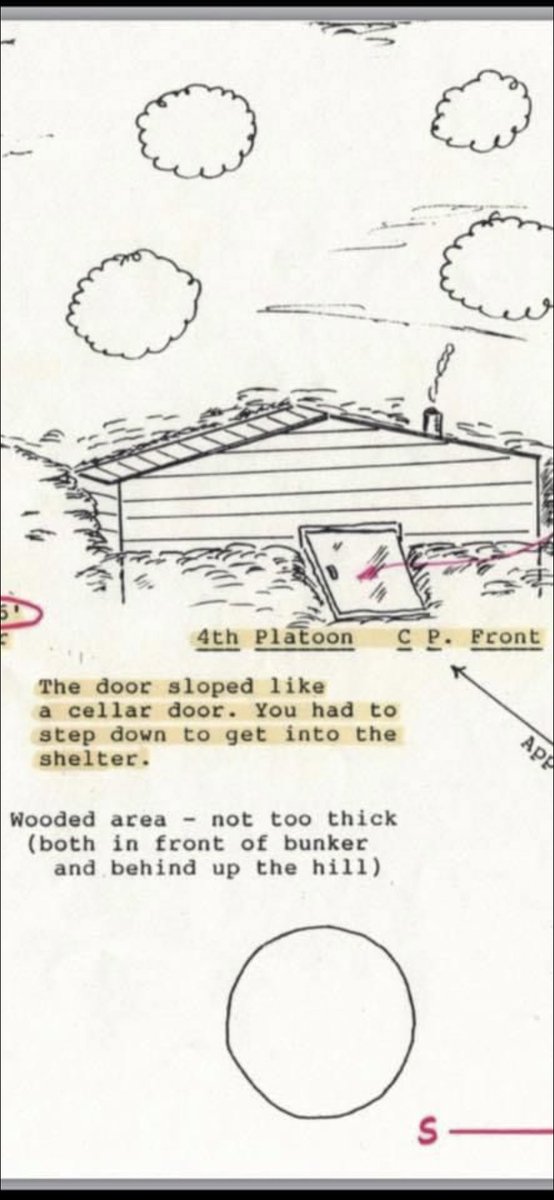
Lets take a look at the battle of Breville in June '44, in reality this would be the frontline on the left flank till Operation Paddle at the end of August.
Lets set the scene from 7 June, the 1 Special Service Brigade (Commandos) along with the 6 Airborne Div holding the line.
Lets set the scene from 7 June, the 1 Special Service Brigade (Commandos) along with the 6 Airborne Div holding the line.

There was a gap between Amfreville and Chateau St Come, about 1 mile long. The British line needed to be closed with the German forces occupying the village of Breville. A large area of no mans land existed during this period around there. 

Today's Google gives you an idea of the gap in the line. It does not really give you an appreciation of the terrain from this angle, we will get to that and its relevance of what takes place later. 

How close was Amfreville and Breville? Basically the road signs are back to back, the villages are pretty much joined. This lower part of what is Amfreville was effectively under no control and possibly classed as Breville by those there in June' 44. 





On the 7 June at 2130hrs, Colonel Otway in charge of the 9th Parachute Battalion were relieved at the Chateau Amfreville by Lt Col Peter Young and his men of No.3 Commando. Otway is told he is then to go to the Chateau St Come, take up positions and hold at all costs! 

At 2330hrs Otway and his men moved out from the chateau to head to Chateau St Come. They approached what was know as the Breville junction. They arrive at the junction around midnight, Pte Rooke Matthews stated how 'slow and stop start it was'. 



The men had a horse and cart with them, the horse hooves covered in blankets to hide the noise of their advance through the villages. At the crossroad they turned right and headed down towards the road that leads to Ranville. Image- NCAP, 15 June '44 

Otway and his men came down the road from the left, you can now see the Breville ridge line from this position. The men were down in a depression below Breville, which offered some protection and out of sight espcially at night. The chateau is up to the right side. 

In this area has they moved towards the Chateau, they did encounter a German column on patrol but this was not engaged. The men of the 9th Battalion managed to remain concealed and kept the horses in tow quiet by stroking them. They then continued on when safe. 



At around 0130hrs on the 8 June, Otway and his men began arriving in the area at the bottom of a tree lined lane, this became known as the 'sunken lane'. The photograph is looking down towards the bottom where the 9th Battalion came in from. 



Otway arrived at the top of the Sunken lane and found Major Charlton walking up and down the road opposite the Chateau St Come smoking. No Germans were around and Charlton told him there were none in the chateau about 250 yards away. 



It was now a case of the 9th Battalion digging in and holding this position at all costs. Otay went off to the neighbouring bungalow which land adjoins the sunken lane just off to the left. Positions would be held along the right looking over towards Breville. 

This is the view just in front of the positions within the sunken lane looking towards a crest which hides Breville from view. Once over the crest though the ground drops away on a down slope in full view of Breville. the village is towards the right hand side of the crest. 

It would be from these very positions that on the 11 June, the men of the 5th Black Watch would make their attack from towards Breville. This view shows the field where they would advance across. We will look at their attack in more detail in another thread. 

The 9th Battalion war diary for the 7 June for this move records little apart from the order to move from Amfreville to the St Come area. They only pass Breville on this day and did not hold it, they did not enter into the village. This would not happen untill the 12 June. 

• • •
Missing some Tweet in this thread? You can try to
force a refresh




















